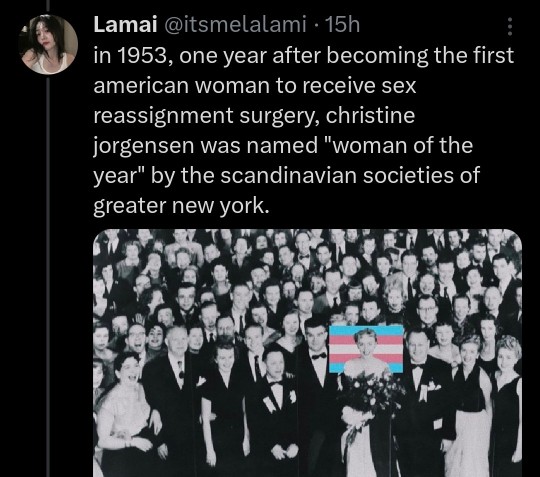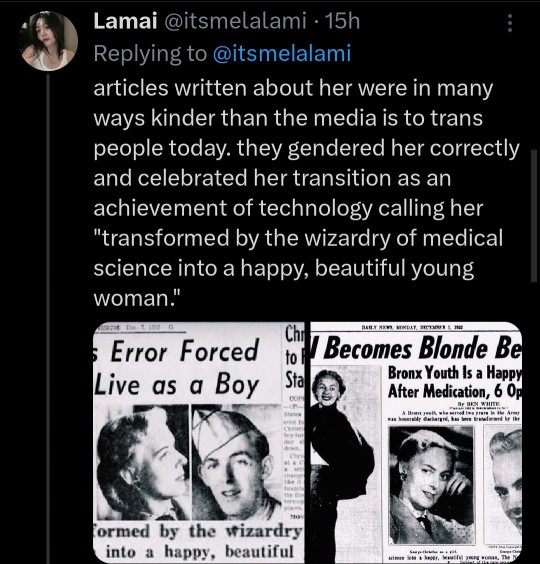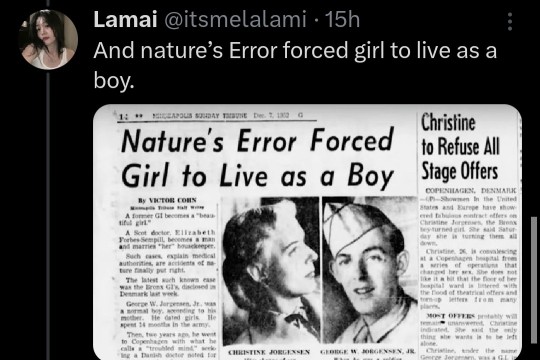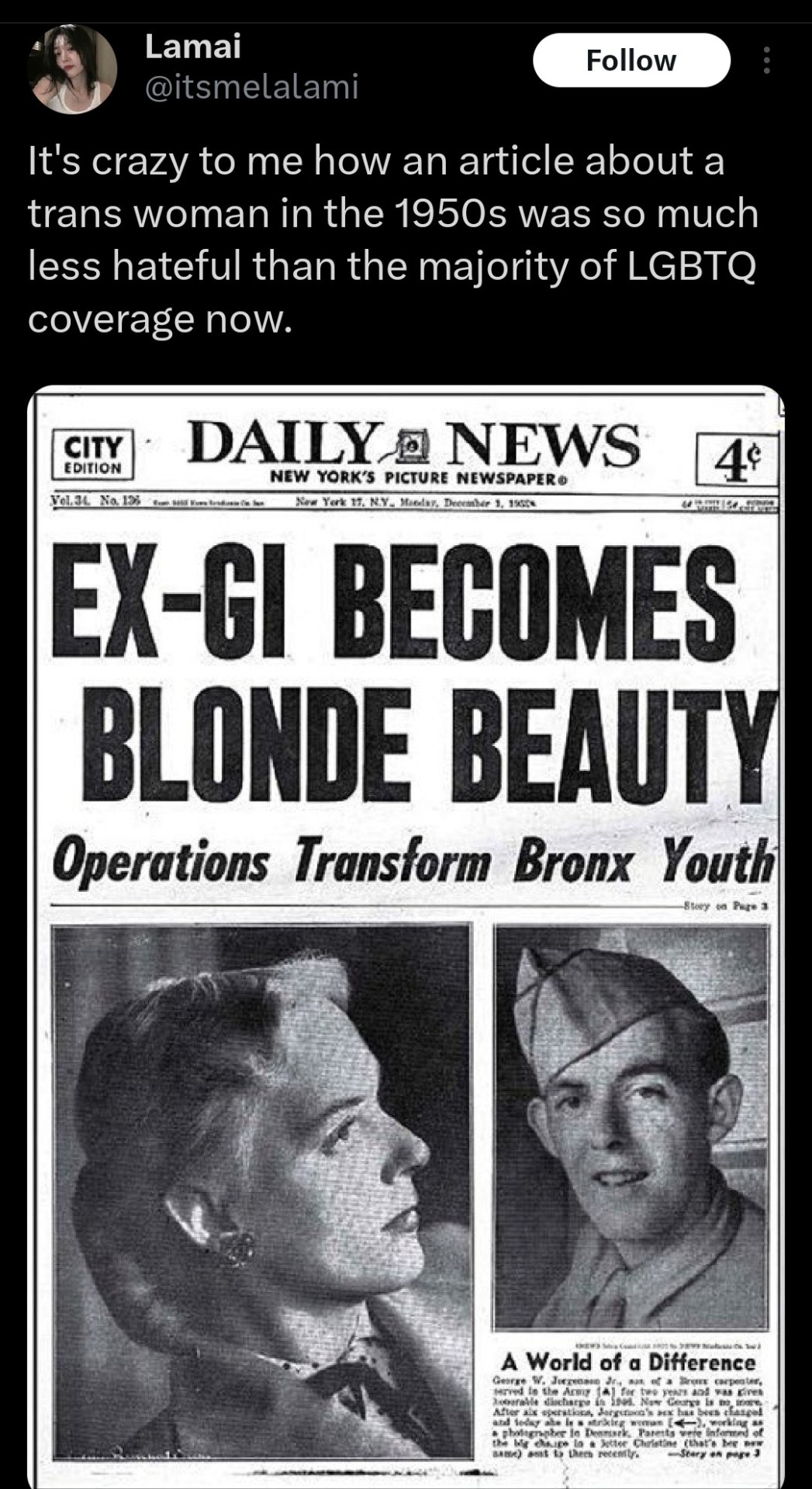#is an outlier and does not reflect the majority of trans experiences at the time
Explore tagged Tumblr posts
Text
This is incredibly misleading when it comes to what trans lives were like in the 1950s. Christine Jorgensen did get a better reception from the media and the public than she expected after her transition, but she also received a lot of hate and was used as a political scapegoat by conservatives. She may have gone on to have a successful career as an entertainer, but it was not as easy a road as this article and the above tweets make it seem. A large part of her acceptance was that she met the traditional ideals for what a woman should be and look like at that time, which is something that cannot be overlooked.
Please always consider that when it comes to history, a single source is insufficient for basing any theory about what life was like at that time. This is one person's story and doesn't give an accurate reflection of what trans lives were like for BiPOC folks, for non-war heroes, and particularly for those who could not and/or did not live up to the cultural ideal of what an ideal woman or man looked like.
So here are some resources and info for those who are interested. Christine's life is fascinating, so here is a more thorough article on her life:
Information on the Lavender Scare, an era where all the folks we would put under the LGBTQUIA+ banner today were targeted by the government. The fact that Christine Jorgensen managed to succeed at all during this time is rather remarkable.
A short but useful and informative article on the history of the modern trans movement.
And finally, a fantastic article from JSTOR that talks about why Christine Jorgensen was so accepted and why she was an outlier. It also gives a great timeline of the legal battles faced by all LGBTQUIA+ folks from that era and onward, with lots of reference and internal links for those who want to learn more.





#tldr;#trans people have always been a political targets#christine jorgensen#is an outlier and does not reflect the majority of trans experiences at the time#but her story is also an important part of our history#she deserves to be remembered and celebrated#but we cannot use her as a point to say that people back then had it better#because they very much did not#as much as we remember her we also need to remember all trans lives that were and are taken because of hate#focusing on her story and pointing to it as a an icon of what life was like for trans people erases the pain and suffering of so many#but particularly the trans lives that were (and are still) taken from us because of hatred#most especially the BiPOC trans lives given that black and indigenous trans people are still murdered in higher numbers#trans history#queer history#lgbtquia+ history#lgbtquia+
32K notes
·
View notes